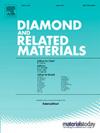N-doped porous carbon nanofibers with high specific capacitance and energy density for Zn-ion hybrid supercapacitors
IF 4.3
3区 材料科学
Q2 MATERIALS SCIENCE, COATINGS & FILMS
引用次数: 0
Abstract
N-doped porous carbon nanofibers have shown a wide application prospect for Zn-ion hybrid supercapacitors (ZHSs), but so far, the affordable synthesis remains a daunting challenge. Using the exfoliated silk nanofibrils (SNFs) as carbon and nitrogen sources, NaCl/KCl as carbonization medium and KOH as active agent, herein, a new variety of N-doped porous carbon nanofibers, SPCN-x, is prepared, involved a sequential ‘SNFs exfoliation’ and ‘mixture pyrolysis’. Results confirm that, with the activation of KOH, porosity structure and specific surface area of the nano-fibriform products are clearly enriched, thus forming a hierarchically porous structure. Typically, SPCN-10 shows a N doping content of 5.6 wt%, pore volume of 0.33 cm3 g−1 and specific surface area of 645 m2 g−1, and presents a great energy storage property as cathode for ZHSs, such as energy density of 70.4 Wh kg−1 and specific capacitance of 197.9 F g−1. Besides, it has excellent durability with a capacitance retention rate of 90.2 % after 10,000 cycles. The electrochemical behavior of SPCN-10 is better than numerous reported ZHS cathodes, which not only highlights our ingenious synthesis, but also ensures a huge potential in large-scale practical application.

用于 Zn 离子混合超级电容器的具有高比电容和能量密度的 N 掺杂多孔碳纳米纤维
掺杂N的多孔碳纳米纤维在掺杂Zn离子的超级电容器(ZHS)中具有广阔的应用前景,但迄今为止,如何以可承受的价格合成这种碳纳米纤维仍是一项艰巨的挑战。本文以剥离的蚕丝纳米纤维(SNFs)为碳源和氮源,以NaCl/KCl为碳化介质,以KOH为活性剂,通过 "SNFs剥离 "和 "混合热解 "两个步骤,制备了一种新品种的N掺杂多孔碳纳米纤维SPCN-x。结果证实,在 KOH 的活化作用下,纳米纤维状产品的孔隙结构和比表面积明显增加,从而形成了分层多孔结构。通常,SPCN-10 的 N 掺杂含量为 5.6 wt%,孔隙体积为 0.33 cm3 g-1,比表面积为 645 m2 g-1,作为 ZHS 的阴极具有很好的储能特性,如能量密度为 70.4 Wh kg-1,比电容为 197.9 F g-1。此外,它还具有出色的耐久性,在 10,000 次循环后电容保持率为 90.2%。SPCN-10 的电化学行为优于许多已报道的 ZHS 阴极,这不仅凸显了我们的巧妙合成,也确保了其在大规模实际应用中的巨大潜力。
本文章由计算机程序翻译,如有差异,请以英文原文为准。
求助全文
约1分钟内获得全文
求助全文
来源期刊

Diamond and Related Materials
工程技术-材料科学:综合
CiteScore
6.00
自引率
14.60%
发文量
702
审稿时长
2.1 months
期刊介绍:
DRM is a leading international journal that publishes new fundamental and applied research on all forms of diamond, the integration of diamond with other advanced materials and development of technologies exploiting diamond. The synthesis, characterization and processing of single crystal diamond, polycrystalline films, nanodiamond powders and heterostructures with other advanced materials are encouraged topics for technical and review articles. In addition to diamond, the journal publishes manuscripts on the synthesis, characterization and application of other related materials including diamond-like carbons, carbon nanotubes, graphene, and boron and carbon nitrides. Articles are sought on the chemical functionalization of diamond and related materials as well as their use in electrochemistry, energy storage and conversion, chemical and biological sensing, imaging, thermal management, photonic and quantum applications, electron emission and electronic devices.
The International Conference on Diamond and Carbon Materials has evolved into the largest and most well attended forum in the field of diamond, providing a forum to showcase the latest results in the science and technology of diamond and other carbon materials such as carbon nanotubes, graphene, and diamond-like carbon. Run annually in association with Diamond and Related Materials the conference provides junior and established researchers the opportunity to exchange the latest results ranging from fundamental physical and chemical concepts to applied research focusing on the next generation carbon-based devices.
 求助内容:
求助内容: 应助结果提醒方式:
应助结果提醒方式:


